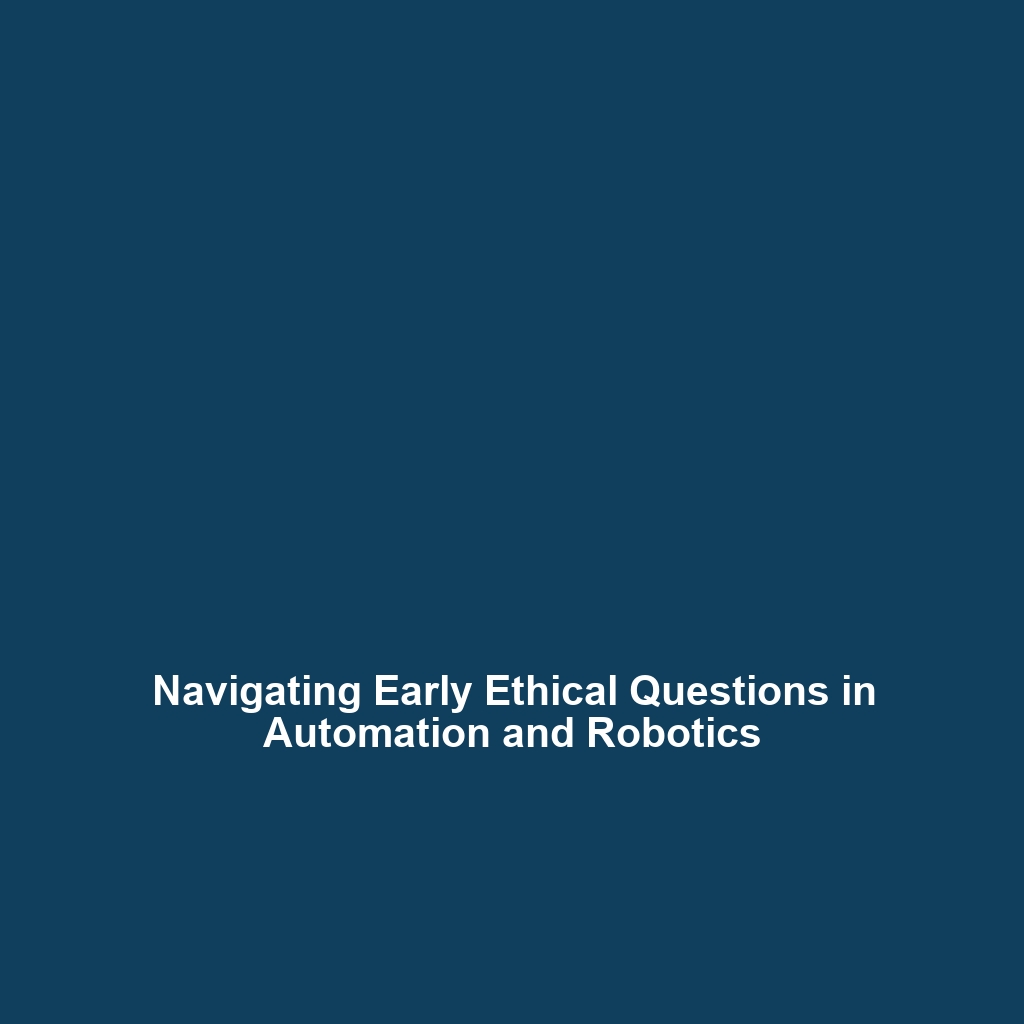Ethical Concerns About Humanoid Robots Replacing or Imitating Human Roles
Introduction
The rise of humanoid robots capable of replacing or imitating human roles prompts significant ethical discussions. As these robotic entities become increasingly prevalent in various sectors, including healthcare, customer service, and entertainment, their implications on human dignity, employment, and social interactions cannot be ignored. This article delves into the ethical concerns surrounding humanoid robots, emphasizing the necessity of addressing these issues to pave the way for responsible advancements in robotics.
Key Concepts
Understanding the ethical concerns about humanoid robots requires a clear grasp of several key concepts:
Human Dignity and Autonomy
As humanoid robots take on roles traditionally held by humans, questions arise regarding respect for human dignity and autonomy. Ensuring these robots do not devalue human experience is paramount.
Employment and Economic Impact
The potential for humanoid robots to replace human jobs poses significant economic concerns, necessitating discussions about workforce displacement and the future of employment.
Social Interaction and Relationships
The imitation of human behavior by robots may alter social dynamics, raising ethical questions about genuine interactions versus robotic substitutes.
Applications and Real-World Uses
Humanoid robots are already being utilized across various fields, highlighting the real-world significance of exploring ethical concerns:
- Healthcare: Robots assist in patient care, rehabilitation, and elder support while raising concerns about empathy and human touch.
- Customer Service: Automated assistants handle customer inquiries, but their deployment raises ethical questions about job displacement.
- Education: Humanoid robots are used as teaching aides, which sparks debates about the quality of education and human educator roles.
Current Challenges
The challenges of ethical concerns surrounding humanoid robots include:
- Defining clear ethical guidelines for robot behavior.
- Addressing public perception and acceptance of humanoid robots.
- Understanding legislative implications and establishing regulations.
- Bridging the knowledge gap between technological advancement and ethical considerations.
Future Research and Innovations
Research into the ethical implications of humanoid robots is evolving, with significant innovations on the horizon:
- Developing ethical frameworks for programming humanoid robots.
- Creating advanced humanoid robots that can respond to emotional cues more effectively.
- Exploring the integration of humanoid robots to complement rather than replace human roles in workplaces.
Conclusion
As humanoid robots increasingly replace or imitate human roles, the ethical concerns surrounding their use become more pronounced. Addressing these challenges is essential for responsible implementation of this technology. Continued research and open discussions can lead to innovative solutions that respect human dignity while leveraging the benefits of robotics. For further reading on this subject, explore our articles on ethical frameworks in robotics and the future of work with robots.


